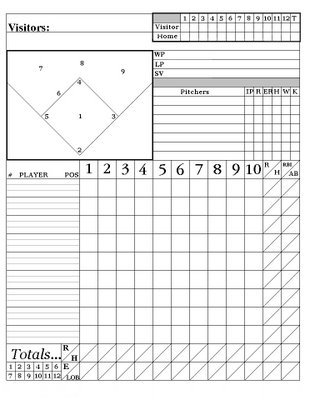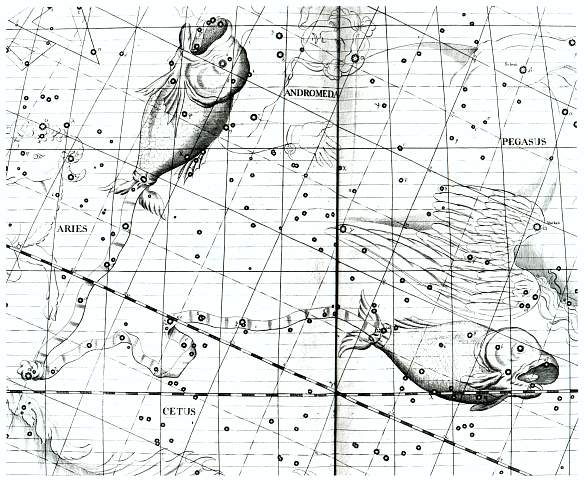ADAM WRITES...
Hey Jim! I can't believe it - BASEBALL has started! You must be excited, especially after watching the Cards romp the Phillies. Pujols is still God, Eckstein still has more hustle than Bishop Don Magic Juan, and Rolen hits a grand slam in his first game since last July! But the most impressive thing probably happened on the Phillies side - Rollins belting one down the first base line to extend his hitting streak to 37 games.
So tell me this - Do you think anyone will ever break DiMaggio's hitting streak? What kind of pressure did DiMaggio go through when he was in the thick of things? Where have all the cowboys gone?
AND BRIAN WRITES...
So tell me Jim, what are you predictions for the Cardinals this season? Let's start with Joe DiMaggio's hitting streak. 1941 must have been a good year for hitters. Two things happened that year. Joe DiMaggio's 56 game hitting streak and Ted Williams' .406 batting average (the last time anyone in the majors hit above .400). Many consider Joe's hitting streak a record that is unbeatable. That hitting streak started on May 15. The Yankees and Joe were both struggling. They had lost four games in a row and seven of their last nine; they were in fourth place, five and a half games behind the league-leading Cleveland Indians. On that day at Yankee Stadium, playing the Chicago White Sox, DiMaggio hit a first inning single off stocky left-hander Edgar Smith, but the Yankees lost again, 13-1.

Joe kept on hitting and the Yankees kept on winning. By the time 30 games had passed, people were paying close attention to Joe's streak. The modern era National league record was held by Rogers Horsnby who set the record of 33 consecutive games with a hit in 1922 with the Cardinals. That same year (another good year for hitting) George Sissler hit in 41 consecutive games for the St. Louis Browns to set a modern era major league record. The all time record had been set by "Wee" Willie Keeler. He "Hit'm where they aint" 44 consecutive games in 1897 for the old National League Baltimore Orioles. Keeler's record though, was aided by the fact that foul balls were not yet called strikes.
As Joe extended his streak, the pressure was growing. Though DiMaggio would say that the pressure was getting to him, his team mate, Lefty Gomez would later recall "To look at Joe you'd never think he had any pressure on him. I never saw a guy so calm. I wound up with the upset stomachs." Joe has always been considered one of the most graceful ballplayers ever. Think about the pressure that was on McGwire and Sosa in 1998. Roger Maris's hair started falling out in 1961 when he was on track to beat the home run record. For the home run record, you could miss a day or two or more without being out of contention. Hitting streaks are relentless. One game and it is over. You have to produce every day and every day brings more pressure. Joltin' Joe got few favors from the official score keepers. The thought at the time was he shouldn't break a record with a cheap hit so if there was any question as to whether it was a hit or not, the decision often was: it wasn't.

On July 17th, the Cleveland Indians put an end to Joe's streak. but what most people forget is after that one game without a hit, he went on to hit in 16 more straight games. A total of 71 games out of 72!
So, can that streak be broken? Absolutely. Is it likely in this era? No way. In this era, we worship the home run. Players concentrate on hitting for the fences. Some teams, especially in the American League, build their entire strategy on big hits. Get a man on base and drive him in, preferably with a homer. However, this is not a record that can't be broken. Cy Young's record of 511 wins will never be broken because there have been fundamental changes in the game that make it not unlikely but impossible. Who could imagine that anyone could ever beat Lou Gehrig's record of 2,130 consecutive games played? In 1990, Cal Ripkin Jr. did that and extended that record to 2,632. At 162 games per year, that is 16 1/4 years of never missing a game. It can't be done! But it was.
As far as my prediction for this year's Cardinals, I have to agree with everyone else's prediction, and that is the Cards are good enough to take the Central division but not good enough to make it to the World Series. They're not as good as they were last year. Compared to 2004, their pitching is better but there batting and fielding is worse. Like every team this time of the year, there are a lot of question marks. Can Rolen stay healthy? Can Encarnacion produce? Can they find a second baseman? Can Rolen stay healthy? Can Izzy keep giving up hits and runs at his usual prodigious pace and still keep winning? Can Rolen stay healthy? Can the bullpen produce? Can Rolen stay healthy? I think one team in the National League to watch for this year is the Mets.

A bigger question in my mind is not the team but the ownership. Their quest seems to be to wring every last penny out of the St. Louis Stepford fans, before we just start losing interest. Already, it is tough to watch a game on TV unless you have cable. They left the best broadcast signal in the Midwest so they can make more money on the radio end. Not only is there a problem with the new station's signal (half the radios in my house pick up more static than station), but then they fired all the good sports people and replaced them with Howard Stern sports wannabees.* They have built us a new stadium with more high priced seats and fewer affordable seats. They promised us great vistas of the city skyline from the new ballpark (no more stadiums) and then got commitments from surrounding hotels, offices and parking garages to not let anyone watch the ball game from outside the park. They have dropped their payroll from sixth to eleventh in the majors while their ticket prices have rose to third behind the Redsox and Cubs (yes, it is cheaper to go to a Yankees game than a Cardinals game). I guess the question is: is Cardinal mania here to stay or is this just a bubble that could burst when enough fans get priced out of the market? Will people wake up one day and realize that it is just no fun anymore? Are the owners truly committed to a winner or only committed to making money. We should have a pretty good idea this year. If we find ourselves in contention this year (as we should) but are missing a piece or two to make a run for a world champ (which we probably are), will they be willing to buck up and pick up that piece later in the year to make things happen, or will they be content to know that they have already sold out all the tickets, and sit on their hands?
* My radio rant... The new sports personalities seem to be all about strong opinions rather than good opinions. After each game, the pair of jocks (Monty and Hadley?) will pick a topic and beat it to death. Should Pujols have run for home with one out, the game on the line, and a hit straight to the short stop? Well, of course, the answer is no, but they spent at least a half hour on the subject and used it to bait listeners to call in and argue about it. Not debate it but argue about it. The jocks are yelling at each other, they are yelling at the fans, the fans are yelling at them and all was based on a "yes he should - no he shouldn't" format. They clearly have the agenda of getting fans riled up so they will call the radio station and argue.
Back when the Olympics were on, I was listening to "Monty on Sports". Monty went on a spiel about how boring the Olympics were (of course they were directly competing with his air time). He said he didn't even know if the US still had men in the figure skating competitions but of course he watched the girls figure skating because they were hot. He then went on to tell us that the winning dog from the Westminster dog show had gotten loose at the airport and ran away. While searching for this dog, they found some feces that were consistent with the size dog that was lost so they thought he was still near the airport. He then went on for ten minutes (or longer, as I had turned off the radio at that point) talking about dog poop. This guy knows nothing about the Olympics, but knows much about dog poop. Is this what people are really looking for on sport talk radio?















